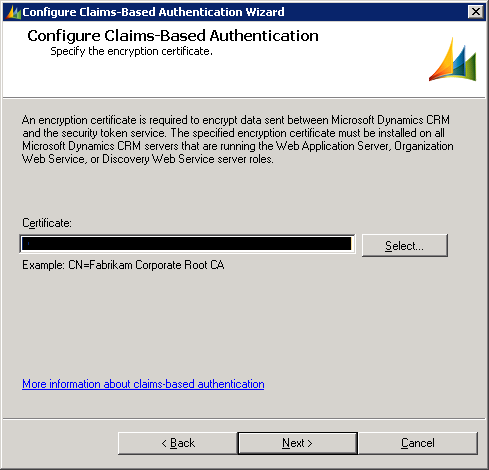Error: ID4175: The issuer of the security token was not recognized by the IssuerNameRegistry. To accept security tokens from this issuer, configure the IssuerNameRegistry to return a valid name for this issuer.
Error Message: ID4175: The issuer of the security token was not recognized by the IssuerNameRegistry. To accept security tokens from this issuer, configure the IssuerNameRegistry to return a valid name for this issuer.
Source File: Not available
Line Number: Not available
Request URL: https://devcrm1.dev.local/default.aspx
Stack Trace Info: [SecurityTokenException: ID4175: The issuer of the security token was not recognized by the IssuerNameRegistry. To accept security tokens from this issuer, configure the IssuerNameRegistry to return a valid name for this issuer.]
at Microsoft.IdentityModel.Tokens.Saml11.Saml11SecurityTokenHandler.CreateClaims(SamlSecurityToken samlSecurityToken)
at Microsoft.IdentityModel.Tokens.Saml11.Saml11SecurityTokenHandler.ValidateToken(SecurityToken token)
at Microsoft.IdentityModel.Tokens.SecurityTokenHandlerCollection.ValidateToken(SecurityToken token)
at Microsoft.IdentityModel.Web.TokenReceiver.AuthenticateToken(SecurityToken token, Boolean ensureBearerToken, String endpointUri)
at Microsoft.IdentityModel.Web.WSFederationAuthenticationModule.SignInWithResponseMessage(HttpRequest request)
at Microsoft.IdentityModel.Web.WSFederationAuthenticationModule.OnAuthenticateRequest(Object sender, EventArgs args)
at Microsoft.Crm.Authentication.Claims.CrmFederatedAuthenticationModule.OnAuthenticateRequest(Object sender, EventArgs args)
at System.Web.HttpApplication.SyncEventExecutionStep.System.Web.HttpApplication.IExecutionStep.Execute()
at System.Web.HttpApplication.ExecuteStep(IExecutionStep step, Boolean& completedSynchronously)
Some sort of ADFS issue, I thought to myself. So I jumped onto the Dev ADFS box and found no correlated errors :(
I checked the Relying Party Trusts and the CRM one was fine, not showing any errors, I even went as far as using the test url facility, but alas, no dice.
During my general sweep of ADFS, I looked at the certificates and .... there were new certificates as the old ones were about to expire:
This means that the certificate thumbprint for token signing being used by Dynamics CRM is wrong and needs changing. This is trivial for web services, as all you need to do is change the bold line in the web.config to reflect the new certificate thumbprint.
<microsoft.identityModel>
<service name="MyCustom.Service.Something">
<audienceUris>
<add value="https://devcrm1.dev.local:1337/MyCustom.Service.Something/Service.svc" />
</audienceUris>
<issuerNameRegistry type="Microsoft.IdentityModel.Tokens.ConfigurationBasedIssuerNameRegistry, Microsoft.IdentityModel, Version=3.5.0.0, Culture=neutral, PublicKeyToken=31bf3856ad364e35">
<trustedIssuers>
<add thumbprint="5CE1DB0783B190D1CE4481B9C39CAD61AC6ACD56" name="http://adfs.dev.local/adfs/services/trust" /> </trustedIssuers>
</issuerNameRegistry>
</service>
</microsoft.identityModel>
In MS Dynamics CRM things are perhaps simpler as there is no editing of the web.config file just a reconfiguration of Claims-Based Authentication (really, just run through the wizard as all other settings should already be correct):
1. Start the Deployment Manager:
2. Click Configure Claims-Based Authentication, which will launch the wizard and continue clicking next until the end of the Wizard.
3. Restart IIS.
Having done this, I was able to access my Dev environment again.







